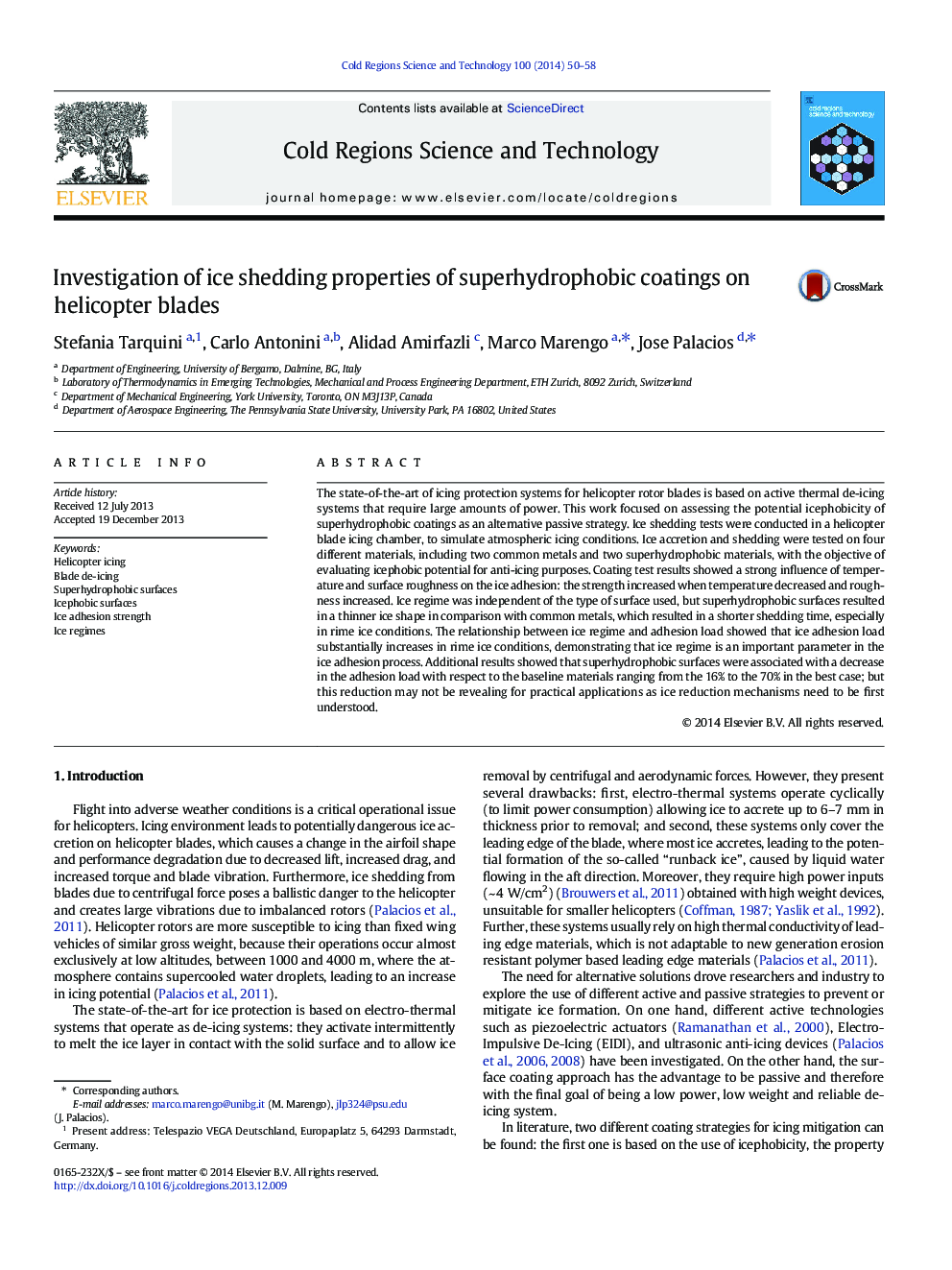| Article ID | Journal | Published Year | Pages | File Type |
|---|---|---|---|---|
| 4675735 | Cold Regions Science and Technology | 2014 | 9 Pages |
•Evaluation of the icephobic properties of superhydrophobic coatings•Air temperature and surface roughness are the most important parameters.•Shedding time is shorter for superhydrophobic surfaces (SH) materials, especially in rime ice conditions.•Ice adhesion increases if the temperature decreases in rime ice conditions.•Superhydrophobic surfaces present lower ice adhesion load than baseline materials.
The state-of-the-art of icing protection systems for helicopter rotor blades is based on active thermal de-icing systems that require large amounts of power. This work focused on assessing the potential icephobicity of superhydrophobic coatings as an alternative passive strategy. Ice shedding tests were conducted in a helicopter blade icing chamber, to simulate atmospheric icing conditions. Ice accretion and shedding were tested on four different materials, including two common metals and two superhydrophobic materials, with the objective of evaluating icephobic potential for anti-icing purposes. Coating test results showed a strong influence of temperature and surface roughness on the ice adhesion: the strength increased when temperature decreased and roughness increased. Ice regime was independent of the type of surface used, but superhydrophobic surfaces resulted in a thinner ice shape in comparison with common metals, which resulted in a shorter shedding time, especially in rime ice conditions. The relationship between ice regime and adhesion load showed that ice adhesion load substantially increases in rime ice conditions, demonstrating that ice regime is an important parameter in the ice adhesion process. Additional results showed that superhydrophobic surfaces were associated with a decrease in the adhesion load with respect to the baseline materials ranging from the 16% to the 70% in the best case; but this reduction may not be revealing for practical applications as ice reduction mechanisms need to be first understood.
